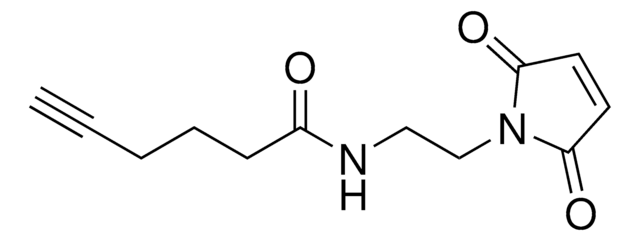すべての画像(1)
About This Item
化学式:
RuCl3 · xH2O
CAS番号:
分子量:
207.43 (anhydrous basis)
MDL番号:
UNSPSCコード:
12352302
NACRES:
NA.21
おすすめの製品
グレード
for analytical purposes
品質水準
アッセイ
≥99.9% trace metals basis
フォーム
powder
不純物
≤1000.0 ppm (trace metals analysis)
溶解性
acetone: soluble ((lit.))
ethanol: soluble
water: soluble
密度
3.11 g/cm3
SMILES記法
O.Cl[Ru](Cl)Cl
InChI
1S/3ClH.H2O.Ru/h3*1H;1H2;/q;;;;+3/p-3
InChI Key
BIXNGBXQRRXPLM-UHFFFAOYSA-K
類似した製品をお探しですか? 訪問 製品比較ガイド
関連するカテゴリー
詳細
Ruthenium chloride hydrate is a dark brown or black solid often used as a powder. The hydrate is hygroscopic and is soluble in water, ethanol, acetone, and a wide range of polar organic solvents. The anhydrous form is insoluble.
Industrially, ruthenium trichloride hydrate is produced by dissolving ruthenium oxides in hydrochloric acid. The hydrated salt is obtained by recrystallization.
Industrially, ruthenium trichloride hydrate is produced by dissolving ruthenium oxides in hydrochloric acid. The hydrated salt is obtained by recrystallization.
アプリケーション
Ruthenium chloride is most used as a precursor for the synthesis of ruthenium complexes. Our RuCl3·H2O with 99.9% trace metals purity is well-suited for applications in materials science. One common application of ruthenium trichloride hydrate is in the synthesis of ruthenium nanoparticles, which are used as catalysts or composited with other materials and used as co-catalysts for both oxygen and hydrogen evolution reactions. Researchers have used our ruthenium chloride hydrate to produce high-quality, catalytically active ruthenium nanoparticles and ruthenium oxide nanoparticles.
Another common application of ruthenium chloride hydrate is as a precursor for single-atom catalysts. For example, scientists have used ruthenium chloride hydrate for the synthesis of ruthenium single-atom-doped ZrO2 particles to catalyze nitrogen fixation and for the synthesis of ruthenium single-atom-doped MXenes to catalyze hydrogen evolution. A third common application of ruthenium chloride hydrate is in the synthesis of metal alloys, like PtRuIr, or PtRuFe, which are investigated for electrocatalysis, usually the oxidation of simple organics like methanol or formic acid.
For use in all these applications, also consider our higher-purity ruthenium chloride hydrate, 463779, with trace metals purity greater than 99.98%, which offers the best reproducibility and purity.
Another common application of ruthenium chloride hydrate is as a precursor for single-atom catalysts. For example, scientists have used ruthenium chloride hydrate for the synthesis of ruthenium single-atom-doped ZrO2 particles to catalyze nitrogen fixation and for the synthesis of ruthenium single-atom-doped MXenes to catalyze hydrogen evolution. A third common application of ruthenium chloride hydrate is in the synthesis of metal alloys, like PtRuIr, or PtRuFe, which are investigated for electrocatalysis, usually the oxidation of simple organics like methanol or formic acid.
For use in all these applications, also consider our higher-purity ruthenium chloride hydrate, 463779, with trace metals purity greater than 99.98%, which offers the best reproducibility and purity.
シグナルワード
Danger
危険有害性情報
危険有害性の分類
Acute Tox. 4 Oral - Aquatic Chronic 2 - Eye Dam. 1 - Skin Corr. 1B
保管分類コード
8A - Combustible corrosive hazardous materials
WGK
WGK 3
引火点(°F)
Not applicable
引火点(℃)
Not applicable
適用法令
試験研究用途を考慮した関連法令を主に挙げております。化学物質以外については、一部の情報のみ提供しています。 製品を安全かつ合法的に使用することは、使用者の義務です。最新情報により修正される場合があります。WEBの反映には時間を要することがあるため、適宜SDSをご参照ください。
Jan Code
931578-BULK:
931578-10G:
931578-VAR:
931578-2G:
最新バージョンのいずれかを選択してください:
Synthesis and Activities of Rutile IrO2 and RuO2 Nanoparticles for Oxygen Evolution in Acid and Alkaline Solutions
Lee, Y., Suntivich, J., et al.
The Journal of Physical Chemistry Letters, 3, 399?404-399?404 (2012)
Vinoth Ramalingam et al.
Advanced materials (Deerfield Beach, Fla.), 31(48), e1903841-e1903841 (2019-10-18)
A titanium carbide (Ti3 C2 Tx ) MXene is employed as an efficient solid support to host a nitrogen (N) and sulfur (S) coordinated ruthenium single atom (RuSA ) catalyst, which displays superior activity toward the hydrogen evolution reaction (HER).
Javeed Mahmood et al.
Nature nanotechnology, 12(5), 441-446 (2017-02-14)
The hydrogen evolution reaction (HER) is a crucial step in electrochemical water splitting and demands an efficient, durable and cheap catalyst if it is to succeed in real applications. For an energy-efficient HER, a catalyst must be able to trigger
Fabing Su et al.
Journal of the American Chemical Society, 129(46), 14213-14223 (2007-11-02)
We report here a thermal reduction method for preparing Ru catalysts supported on a carbon substrate. Mesoporous SBA-15 silica, surface-carbon-coated SBA-15, templated mesoporous carbon, activated carbon, and carbon black with different pore structures and compositions were employed as catalyst supports
ライフサイエンス、有機合成、材料科学、クロマトグラフィー、分析など、あらゆる分野の研究に経験のあるメンバーがおります。.
製品に関するお問い合わせはこちら(テクニカルサービス)








